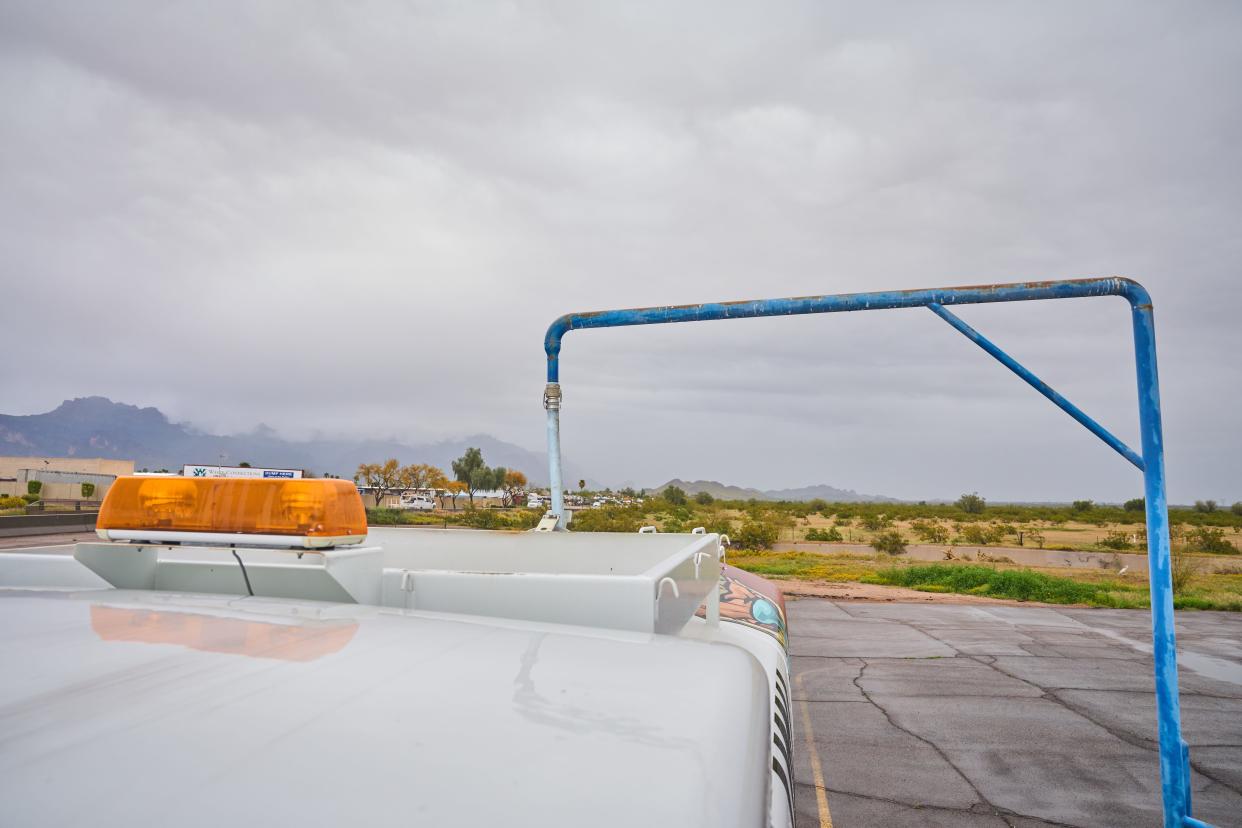The water will be back on in Rio Verde Foothills, but not for everyone who wants it

Rio Verde Foothills should have a more secure water supply soon.
That’s a good thing.
But remember: This is still a temporary supply.
And one that probably won’t serve everyone who wants it.
Scottsdale agreement is a leap forward
Scottsdale unanimously approved an agreement on Sept. 5 to dust off its standpipe — a filling station in the city where water was hauled a few miles to residents in the unincorporated community.
The city had shut off the pipe earlier this year after years of warning residents that it would.
Now, water will flow again until the end of 2025, but not with water from Scottsdale’s supplies.
A citizen-led standpipe district, which lawmakers created earlier this year, hopes to secure that water from EPCOR, a privately owned utility that also wants to offer the community water for the long term.
The district hopes to finalize the deal for EPCOR’s temporary water soon, perhaps even this week.
But what about the homes we can't serve?
Scottsdale has agreed to treat that water, but it’s up to the standpipe district to decide who gets it.
And that probably won’t include everyone, considering that state law limits service to 750 households.
And more than that have responded to a survey saying they want the water.
District board members have rightly said they’ll prioritize those who were receiving water from Scottsdale’s standpipe before the cutoff.
But that may leave only a few slots for emergency connections, should someone’s well fail in, say, 2024, and they suddenly need another supply.
And it pretty much guarantees that homes under construction will be left high and dry.
Rio Verde Foothills can't keep growing
That’s the root problem we still have not solved.
Despite all the bad press about water troubles, people are still building in Rio Verde Foothills on the hopes of finding hauled water.
Unfortunately, the legislation that created the temporary standpipe district did not include any provisions to scale back this sort of growth.
Allhands: How long can Arizona pump groundwater until it's gone?
Efforts to get tougher on so-called “wildcat” lot splits — which are believed to be driving a large chunk of this growth — also failed last session, leaving us with current law.
Which is so vague and toothless that even state officials admit it’s pointless to try to prosecute folks who they believe have illegally split lots, avoiding requirements to prove they have a sustainable water source before building.
We're not done. And the clock is ticking
EPCOR, for its part, has tried to get around this inaction by asking to exclude homes constructed after a certain date from their long-term plan to serve the area.
But it’s unclear whether the Arizona Corporation Commission will grant that request.
An administrative judge has yet to offer his recommendation, which is needed before the full commission can vote on the deal. It’s unclear when that might come.
And, of course, the clock is ticking.
The Scottsdale deal ends in 2025 with no option for extension.
EPCOR also has previously said it needs 24 to 36 months to get its standpipe up and running.
So, yes, it’s good to celebrate this giant leap forward with Scottsdale — particularly after months of inaction. It provides much-needed temporary relief.
But we’re done yet. Not by a long shot.
Reach Allhands at joanna.allhands@arizonarepublic.com. On X, formerly Twitter: @joannaallhands.
If you love this content (or love to hate it – hey, I won't judge), why not subscribe to get more?
This article originally appeared on Arizona Republic: Rio Verde Foothills has water again, but it won't serve everyone

